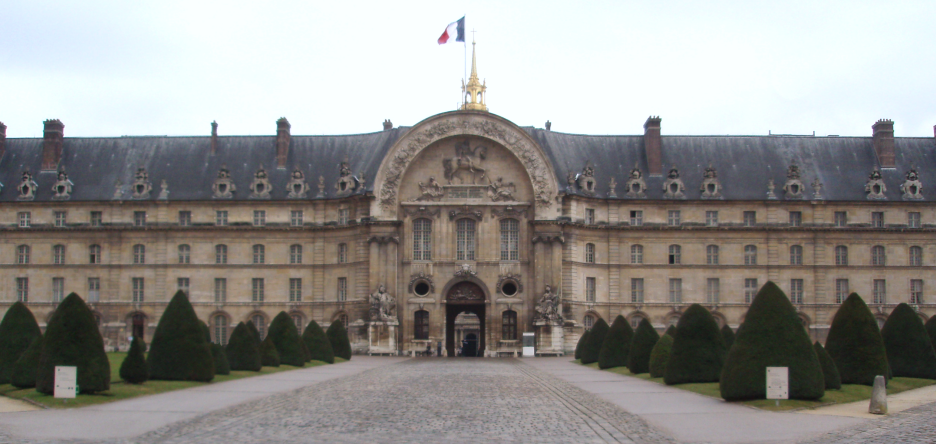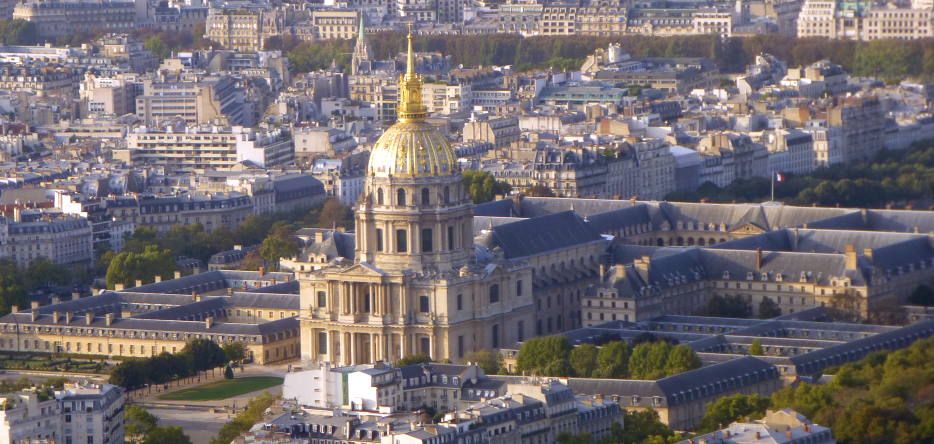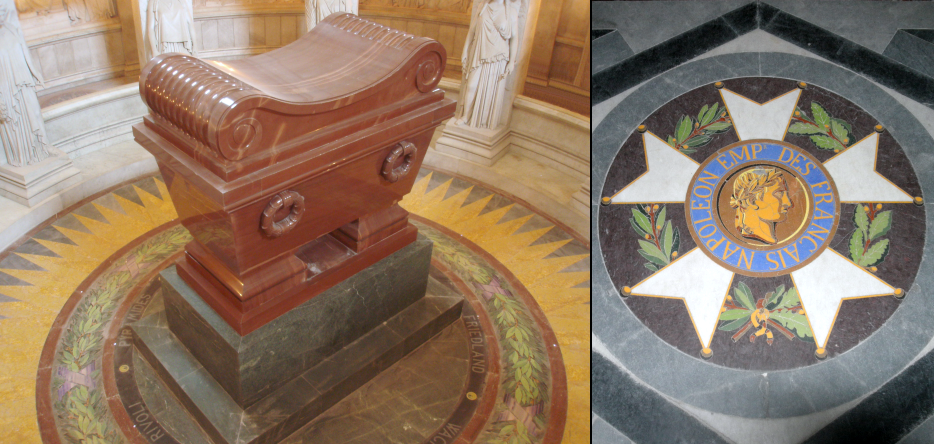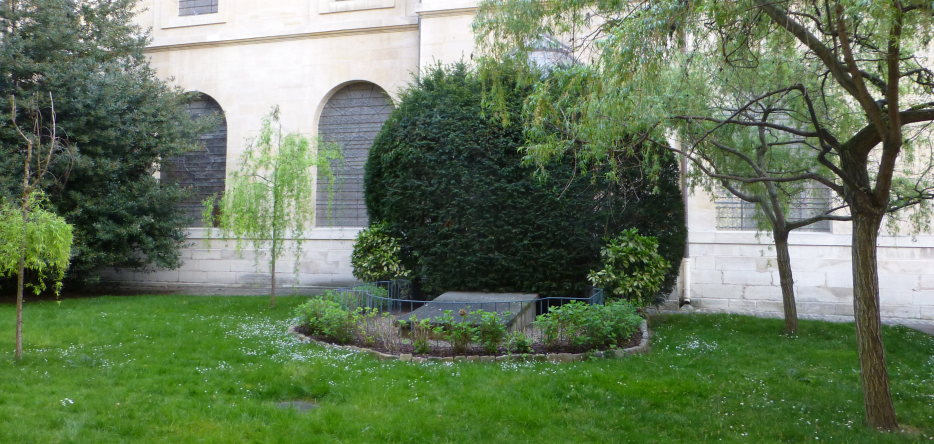Napoleon's Tombs
Torbett Fountain - Les Invalides
Napoleon has been buried in his current location since April 2, 1861. He therefore had to wait nearly forty years before receiving the burial he now has.
This wait was divided into two periods of about twenty years each, between which was the return journey.Saint Helena: The Torbett Fountain
After his death on May 5, 1821, at 5:49 p.m., Napoleon was first buried in his place of exile, on the island of Saint Helena. The British authorities refused to allow the repatriation of the Emperor's body, requested by General Henri Gatien Bertrand.
The Emperor's tomb was dug in a valley then called Geranium Valley or Torbett Fountain, but which soon became known as Tomb Valley. The owner of the site, Mr. Richard Torbett, received compensation of 650 pounds sterling for his land, plus an additional 50 pounds of annual rent.
The prisoner himself, anticipating his jailers' decision, had chosen this site shaded by willows, bathed by a stream, and bordered on three sides by escarpments. He had always held in high esteem the waters of the spring that flowed there, ever since he had discovered them during a horseback ride. They were particularly fresh and clear.
Nothing having been anticipated, the development work began on the morning of the 7th of May. A pit 11 feet long, 10 feet wide, and 8 feet deep was excavated. The bottom was lined with a two-foot-thick masonry slab. An 18-inch wall surrounded the perimeter to retain the earth.
The tomb itself was placed at the bottom of this pit. It consisted of four slabs, six feet by three, and five inches thick, for the two sides, the bottom, and the lid, and two smaller ones at the ends. The whole formed a formwork designed to prevent moisture from reaching the coffin, which had to be placed on two wooden blocks.
This coffin was triple. A first tin coffin, lined with white satin, with a pillow and mattress of the same fabric, held the body. The heart and stomach were placed separately, the first in a silver vase, the second in a simple box. These organs had been removed during the autopsy performed on May 6th in an attempting to determine the cause of the death. Due to lack of space, the Emperor's hat had to be placed on his thighs. A second coffin, made of lead, held the first one after it had been sealed. Soldered in turn, the lead coffin was enclosed within a third one, made of mahogany.
Napoleon was buried on May 9, 1821, wearing his traditional uniform of the mounted chasseurs of the Imperial Guard.
Father Angelo Paolo Vignali celebrated the Mass for the Dead at 10:00 a.m. in the Longwood mansion. Then, twelve unarmed british grenadiers shouldered the coffin to the hearse.
From 11:00 a.m. onward, Governor Hudson Lowe, his wife and daughter, dressed in mourning, and all the British land and sea authorities present on the island followed the convoy, as did the Emperor's last French companions. Many local residents joined the procession.
The entire garrison, approximately 2,000 men, was under arms and lined the route before crowning the hill overlooking the valley. The bands of the various regiments played mournful melodies as the chariot bearing the coffin passed in front of them. Cannon shots rang out every minute, fired by the English flagship and the artillery from the forts.
During the last few decameters, the coffin was once again shouldered by the same twelve grenadiers. It was then lowered into the vault while three salvos of fifteen shots each rang out.
The Emperor's final resting place — or so it was believed at the time — was finally securely sealed. Three slabs would soon be laid to cover it, while a wooden fence would surround the site. No inscription would be engraved on the stones, as Hudson Lowe had opposed the inscription Napoleon I, and the French, in turn, refused to include the inscription General Bonaparte.
Exhumation and Return to France
The Emperor's body remained in its valley for over nineteen years, until October 15, 1840.
He was then exhumed, given three additional coffins, including one made of ebony with a complicated lock, and repatriated to France, where he was laid to rest with great pomp at Les Invalides on December 15.
Les Invalides

Les Invalides was finally chosen as the burial site, after the Paris Pantheon, the Church of the Madeleine, the Arc de Triomphe and the Basilica of Saint-Denis had been ruled out. This decision allowed the authorities to assert a continuity between the military history of the Ancien Régime and that of the French Revolution and then the Empire. It thus reflected the regime's desire to present itself as the heir to all the glories of France.
Les Invalides had been created by King Louis XIV to house the wounded and disabled members of his army. The buildings were organized around a large courtyard of honor. A church, Saint-Louis des Invalides, was built alongside it, consisting of two adjoining spaces separated by an altar: the soldiers' church, which recently had became a cathedral, and the royal church (or chapel), [now deconsecrated], reserved for the use of the sovereign and his family.
The Royal Chapel is topped by a dome that rises to a height of 107 meters (hence the name "Dome Church"), for a long time the tallest building in the capital. Six other smaller chapels radiate around it, four at the corners dedicated to Saint Augustine, Saint Ambrose, Saint Gregory, and Saint Jerome, and two in the middle, dedicated to the Virgin Mary and Saint Theresa.

Saint Jerome Chapel: temporary burial
Napoleon's coffin was first placed in a white satin niche at the foot of a sixteen-meter-high catafalque erected in the center of the Dome Church. This temporary monument was decorated with eagles and flags. Corinthian columns occupied its four corners. Four statues leant against it, adorned with symbolic ornaments: Victory, Immortality, etc. A faithful copy of Napoleon's coffin was installed at the top of this mausoleum.
From December 16 to 27, 1840, the royal chapel was open to the public, guarded by four invalids or four National Guardsmen. It aroused such enthusiasm that it is estimated that over a million visitors crowded in long queues despite the cold and rain.
Immediately after the ceremonies, the redevelopment of the Saint-Jérôme chapel [which today houses the tombs of Jérôme Bonaparte, Napoleon's brother, and of the latter's wife, Catherine of Württemberg] began, with extensive use of tapestries and hangings. Victor Hugo criticized this decoration, which he considered lacking in nobility. In its designers' defense, they probably didn't believe it was meant to last.
On February 6, 1841, the imperial ashes were transported from the catafalque to the Saint-Jérôme Chapel. This relocation of a few dozen meters gave rise to a new ceremony, presided over by Marshal Bon-Adrien Jannot de Moncey, Governor of the Invalides. Gaspard Gourgaud, Emmanuel de Las Cases, and Louis Joseph Narcisse Marchand attended.
The coffin was placed on a platform one meter and seventy centimeters high. In front of it were placed several relics:
- Napoleon's ribbon, Grand Eagle Cross, and Grand Officer's plaque of the Legion of Honor, as well as the grand collar worn during the coronation;
- The hat worn by the Emperor at the Battle of Preußisch Eylau;
- A sword, known as the sword of Austerlitz, which he carried on campaign;
- A wooden box containing the keys to the ebony coffin.
Sixty-five flags captured from the enemy were arranged on either side of the platform, along with, behind it, a bouquet of tricolor flags, topped by a spread eagle clasping a globe.
With all the openings covered by drapes and the light coming only from a single gas lamp, the atmosphere was ordinarily sepulchral.
The Emperor's ashes would await their final burial there until April 2, 1861, a little over twenty years, watched over constantly by four invalids.
Royal Church: Final Burial
In 1841, a national competition was held for the creation of the final tomb. Eighty designs were submitted. A committee, chaired by Théophile Gautier, french novelist and poet, and including sculptor Pierre-Jean David d'Angers and painter Dominique Ingres, selected the design by the Italian-born architect Louis Tullius Joachim Visconti, who had already designed the Parisian decorations for the return of the Ashes.
His proposal consisted of a red porphyry sarcophagus occupying the center of a round crypt dug beneath the Dome Church and opening onto it. The excavation has six meters deep and twenty-one meters in diameter. The opening onto the church spend fifteen meters, with the additional six meters serving to create a circular gallery around the crypt.
The tomb itself, four meters long and two meters wide, was parallelepiped in shape, reminiscent of the Empire style, and blended well with the character of the church. The decoration was understated: four laurel wreaths and a few geometric motifs on the cornice.
The stone from which it was carved was red Chokcha quartzite (not porphyry), named after the village in Finland, then a Russian province, where it was quarried. Its color evoked that of purple, a time-honored symbol of power.
The sarcophagus rested on a base of green Vosges [a mountain range in Northeast France] granite. On the floor, a mosaic listed the names of victorious battles fought by the Emperor.
Around the perimeter of the crypt, leaning against the columns that separated it from the gallery, twelve allegorical statues of women — Victories — were watching over the tomb while symbolizing Napoleon's most famous campaigns. The gallery itself was decorated with ten marble bas-reliefs extolling the Empire's main institutions and civil achievements. For the carving of all these sculptures, Visconti enlisted the help of prominent artists: James Pradier, Pierre-Charles Simart, and François Jouffroy.

When Visconti died in June 1852, the work, well on its way to completion, was continued by Jules-Frédéric Bouchet and, after his death in 1860, by Alphonse-Nicolas Crépinet. However, it would take nearly nine more years for the inauguration to take place. The Cardinal Archbishop of Paris presided over the funeral, in the presence of Emperor Napoleon III, his family, marshals, grand officers of the crown, and members of the Privy Council, among other dignitaries.
Napoleon had written at the top of his will: I desire that my ashes rest on the banks of the Seine, among the French people I loved so much.
His wish was finally fulfilled.
Note
Napoleon's original tombstone, the one on the island of Saint Helena, was also brought back in 1840. It is now located in the courtyard of Nîmes, a small garden adjoining the church of Saint-Louis-des-Invalides, on the west side.
